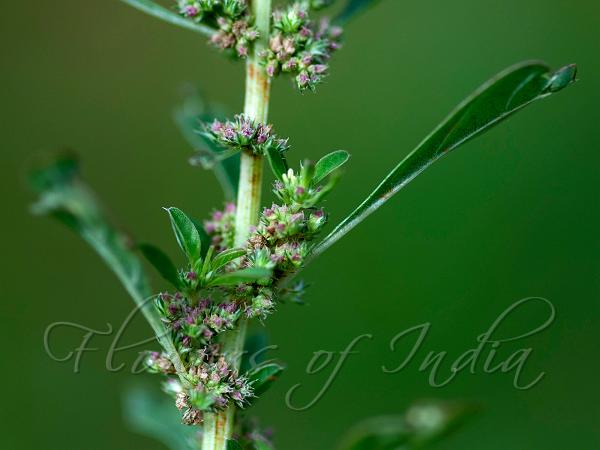|
| White Amaranth |
|

|

| File size | 366043 |
| Original date | 8/1/20 9:05 AM |
| Resolution | 1800 x 1200 |
| Flash | Flash did not fire, auto |
| Focal length | 105.0mm |
| Exposure time | 1/2000s |
| Aperture | 16.0 |
| Focus Distance | |
| Metering Mode | Partial |
| Camera make | Canon |
| Camera model | Canon EOS 7D Mark II |
| Sensor type |
|
|
|
|
Photo: |
Botanical name: Amaranthus albus Family: Amaranthaceae (Amaranth family)
Synonyms: Amaranthus albus var. rubicundus, Amaranthus littoralis
Synonyms: Amaranthus albus var. rubicundus, Amaranthus littoralis
White Amaranth is annual about 15-75 cm tall and 15-90
cm across. Large specimens branch frequently and have a bushy
appearance; they are broader toward the bottom than the top. Small
specimens are more sparsely branched and have a scraggly appearance.
The stems are whitish green to white and round or slightly furrowed.
The alternate leaves are up to 2.5 cm long and 6 mm across, rarely are
they larger than this. Both the stems and the leaves are hairless, or
nearly so. The side branches often develop at right angles from the
central stem. Each leaf is light green, inverted-lanceshaped, and
smooth or slightly wavy along the margins.margin slightly undulate, tip
blunt or notched, with a mucro. Sometimes the leaves have yellowish or
reddish tints. From the axil of each leaf, there develops a small
cluster of inprominent flowers. Each flower is surrounded by 3
lanceshaped bracts about 3 mm in length; each bract has an elongated
tip that is stiff. Because White Amaranth is monoecious, there are
pistillate (female) and staminate (male) flowers. Regardless of its
gender, each flower has 3 green sepals that are lanceshaped and no
petals. Each female flower has an ovary with 3 styles, while each male
flower has 3 stamens. The blooming period occurs from mid-summer to
early fall and lasts about 2 months. The flowers are wind-pollinated.
Each pistillate flower develops a single seed that is surrounded by a
wrinkled membrane (utricle). This membrane splits open around the
middle to release the seed. White Amaranth is native to North America,
widely naturalized elsewhere.
| Identification credit: Shashidharswamy Hiremath | Photographed in Kadaramandalagi, Byadgi-Taluk, Haveri-Dist, Karnataka. |
• Is this flower misidentified? If yes,